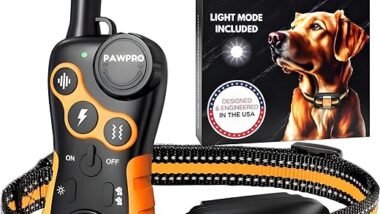In today’s fast-paced world of sports and fitness, improving speed and agility is essential for athletes looking to gain a competitive edge. This step-by-step guide, “How to Improve Speed and Agility with Training Equipment,” offers a comprehensive overview of effective training techniques and specialized gear designed to elevate performance. Whether you are a seasoned athlete or a fitness enthusiast, this guide will equip you with the knowledge and tools needed to enhance your speed and agility through structured training methods. Unlock your full potential and take your athletic performance to new heights!
Three Strategies to Enhance Your Speed and Agility
Select the Right Equipment
Identify your agility and speed goals before selecting training equipment. Assess your current fitness level and specific objectives, such as improving foot speed, enhancing coordination, or increasing explosive power. Choose equipment that aligns with these goals. Agility ladders are excellent for foot speed and coordination drills, while cones can be arranged in various patterns to develop change-of-direction skills. Resistance bands are useful for strength training and can enhance your sprinting power, while speed hurdles help with explosiveness and quickness.
Evaluate the space you have available for training. Ensure you have enough room to move freely and perform drills without obstacles. Select equipment based on portability and ease of use, especially if you plan to work out in different locations. Invest in quality gear that will withstand regular use and provide the needed support. Experiment with different combinations of equipment during your workouts to find what works best for you. Adjust your selections as your skills improve and your training objectives evolve, ensuring you stay challenged and engaged in your agility and speed training.
Warm Up Properly
Start your warm-up by engaging in light jogging for 5 to 10 minutes. Choose a flat, open space where you can move freely. Maintain a steady, comfortable pace, gradually increasing your heart rate. As you jog, focus on maintaining good posture: keep your shoulders relaxed, arms bent at 90 degrees, and feet landing softly. This initial phase primes your cardiovascular system and increases blood flow to your muscles, ensuring they are ready for the demands of agility training.
Incorporate dynamic stretches after your light jog. Perform leg swings by standing on one leg and swinging the opposite leg forward and backward, then switch legs. Execute arm circles by extending your arms out to the sides and making small circles, gradually increasing the size. Follow this with walking lunges, stepping forward with one leg while lowering your hips until both knees are bent at about a 90-degree angle. These mobility exercises help improve flexibility and range of motion, activating the muscles and joints crucial for high-intensity movements.
Incorporate Drills
Set up a series of ladder drills to enhance footwork and quickness. Lay the agility ladder flat on the ground and position it in a straight line. Begin with the basic in-and-out drill, where you step into each square of the ladder with both feet, then immediately step out to the side as you progress forward. Incorporate lateral movements by facing sideways and performing the side shuffle drill, ensuring both feet enter each ladder square. Increase the pace as you become more comfortable, aiming for an explosive speed that challenges your coordination. Experiment with variations like the Ickey Shuffle or single-leg hops to keep the drills engaging and to target different aspects of agility.
Arrange cones in various formations to focus on changing directions rapidly. Set up a zigzag pattern with cones spaced about five yards apart. Sprint towards the first cone, then plant your outside foot and pivot quickly to run towards the next cone. Repeat this movement, emphasizing sharp cuts at each turn to mimic game-like scenarios. For added difficulty, incorporate a backpedal drill where you start at a cone, backpedal to the next, then sprint forward. Use hurdles to add a jumping component, placing them in a straight line or staggered pattern. Perform high-knee drills by driving your knees up to clear each hurdle while maintaining speed. Consistently practice these drills, aiming for 20 to 30 minutes per session, focusing on form and explosiveness to maximize your performance over time.
Track Your Progress
Maintain a detailed log of your training sessions. Record each drill you perform, including specific techniques, durations, and any particular challenges faced. Note the time taken to complete each drill or exercise, as this provides a tangible measure of your speed and efficiency. Document improvements by comparing your current performance with past sessions. This not only helps you see how far you’ve come but also highlights areas that require more focus or adjustment.
Review your records regularly to set new, achievable goals. Analyze the data to identify patterns in your performance, such as consistent strengths or recurring weaknesses. Use this analysis to create targeted objectives that push you further. Celebrate small victories along the way, as these moments of progress will motivate you to keep advancing your skills. Stay committed to this tracking process, and watch your dedication translate into noticeable improvements over time.
Maximize Your Training Results
In conclusion, enhancing speed and agility through training equipment requires a strategic approach that includes choosing the right tools, executing effective warm-ups and drills, monitoring your progress, and implementing proper cool-downs. By adhering to these guidelines, you can significantly boost your athletic performance and elevate your overall fitness levels, setting yourself up for success in your athletic endeavors.








What’s the ideal frequency for incorporating these drills into a weekly routine? I want to make sure I’m not overtraining.
A good rule of thumb is to aim for 2-3 sessions a week, allowing for rest days in between. It’s important to listen to your body and adjust based on how you feel!
For those looking to vary their training, I found incorporating resistance bands, like the TheraBand, into my drills really helped! It adds an extra challenge and builds strength. Anyone else tried this?
Great suggestion! Resistance bands can definitely enhance your training by adding resistance. It’s a fantastic way to build strength while improving speed and agility. Keep up the great work!
I’d love to see an article on nutrition and recovery tips for speed and agility training! It seems like such an important aspect that’s often overlooked.
That’s a fantastic idea! Nutrition and recovery are crucial for optimizing performance. I’ll definitely consider writing more about that in the future!
I’ve been using agility ladders for drills, and they’re fantastic! But I mix it up with the ProForm Agility Ladder and my own bodyweight exercises. It keeps things fun and challenging. What do you guys think?
That’s a great approach! Agility ladders can really help with footwork. Mixing in bodyweight exercises is smart to build strength at the same time. Have you seen improvements in your agility since you started?
I’m curious about the warm-up section. What’s the best way to warm up specifically for agility drills? I’ve been just doing some light jogging, but I feel like I need more tailored movements. Any suggestions?
I faced some challenges tracking my progress. I thought I could just use a fitness app, but it’s hard to measure agility specifically. Anyone have recommendations on tracking methods?
I get that! Tracking agility can be tricky. Some people use stopwatches for timed drills and maintain a journal to note improvements. You might also consider video recording your sessions to visually gauge your progress.
I totally agree with the importance of selecting the right equipment! I recently switched to using the SKLZ Speed Chute for sprinting drills, and it’s been a game changer for my speed. It’s tough but really effective! Anyone else tried it?
Thanks for sharing your experience with the SKLZ Speed Chute! It’s definitely a solid choice for building speed. Have you noticed a significant difference in your sprint times since using it?
Any advanced tips for using equipment like resistance sleds? I want to push my limits without overdoing it. Safety first, right?
Absolutely, safety is key! Start with lighter weights and focus on your form. Gradually increase the load as you gain strength. It’s also helpful to incorporate some rest days to avoid burnout.
I followed the guide and started using the Agility T Drill, and wow, my agility has improved! I feel faster and more coordinated during games. Thanks for the tips!
That’s awesome to hear! The T Drill is a classic for a reason. It’s great to see how following the tips is paying off for you. Keep up the hard work!